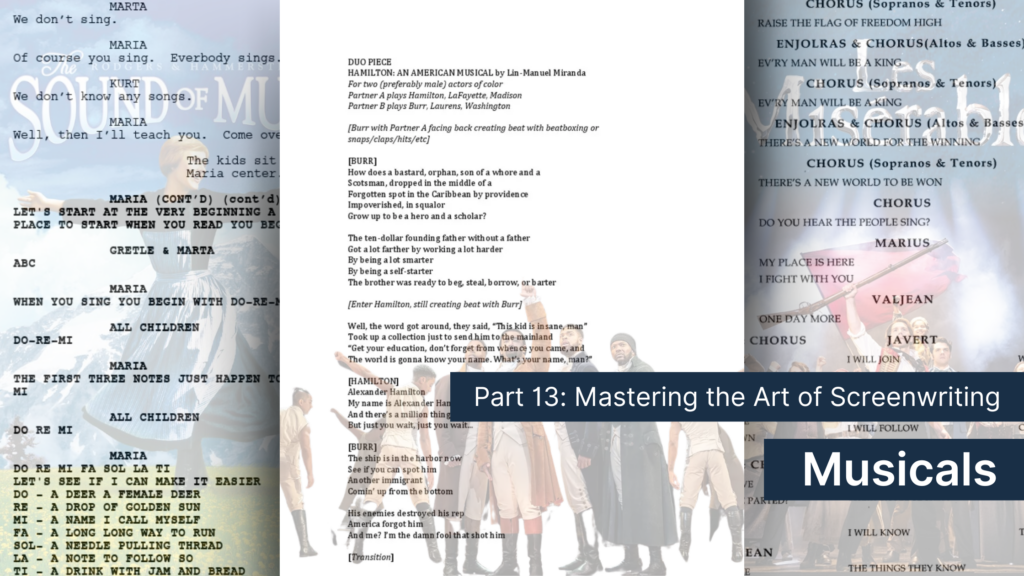
This is part 13 of the Celtx Screenwriting Series. Start from the beginning here
So, you want to write a musical? While crafting any kind of story and script is a challenge, writing a musical is a challenge and then some!
Blending both a compelling story with emotionally resonant music to create an immersive experience for a live audience is something that requires meticulous attention to detail. We all love the musical fusion of dialogue, song, and movement – all which must align harmoniously, or be in danger of being lackluster and your audience leaving during the intermission.
The allure of musicals lies in their ability to tell stories through multiple mediums: spoken word, song, and dance. Multifaceted storytelling like this is designed to engage audiences on various levels, with the aim to make narratives more dynamic memorable.
With all these levels of storytelling to consider, the script needs to be both comprehensive and easy to navigate for all parties involved. The writer’s vision needs to be clear to directors, performers, production teams and the orchestra. Like a movie set, the crew all need to be on the same page!
Think you’ve got what it takes to write a musical? Then allow us to take you through the process step by step.
In today’s article, we’ll delve into the intricacies of how to write a musical, with all the knowledge and resources you’ll need! We’ll even look at some of the world’s most famous musicals and why they’re successful. You could be following in their footsteps sooner than you think!
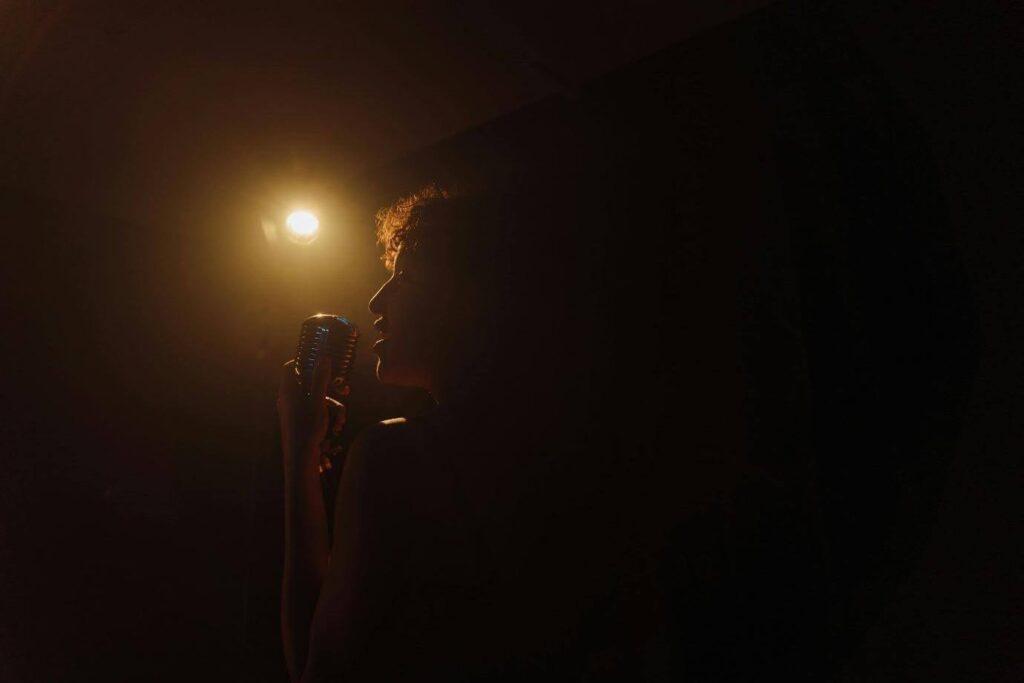
Table of Contents
- How Musicals are Structured
- Formatting a Musical Script
- Writing Lyrics & Dialogue That Flow
- Blocking & Stage Directions in a Stage Musical
- Examples from Broadway & Film Musicals
- Tips for First-Time Musical Writers
- Conclusion
How Musicals Are Structured
First, let’s cover the basics!
How is a musical constructed? Well, typically, a musical will consist of three parts.
- The non-musical sections of the story, known as the book/libretto which detail the narrative structure, characters and the action of the story.
- The music, including the score and songs.
- The lyrics for each song.
All three of these elements must be considered when it comes to the complete script document.
Like the screenplay and play script, musicals must also have a narrative structure, encompassing a plot, a protagonist, antagonist and conflict. Yes, you’re using songs and music to help tell your story, but it’s the premise and the narrative itself are the most important aspects.
Here’s a general overview of a musical structure, broken down into acts, scenes, and musical numbers.
1. Acts
Musicals will usually have two acts, with an intermission in between. Each of these acts will serve a specific narrative purpose.
Act 1 is the set-up, introducing characters and the story conflict.
Act 2 will resolve the conflict, bringing us to the end of the story.
2. Scenes
Acts 1 and 2 are divided into scenes, each in a specific location or moment in time. Here you’ll need to consider scene changes that coincide with shifts in setting or significant plot developments.
Yes, another thing to think about – this musical lark is no laughing matter. But it can be done!
3. Musical Numbers
If your goal is to write a musical, chances are that you’ve dreamt of people singing your soundtrack at the top of their lungs (just look at the success of Wicked!).
Songs are integral to musicals; they advance the plot, reveal character motivation, and provide commentary for the narrative. Let’s take look at these in more detail.
The Opening Number
This first song sets the tone for the musical and introduces the story’s key themes. It needs to be kick-ass!
Think ‘Alexander Hamilton’ from Hamilton which introduces the protagonist, setting, and key conflicts that will need to be resolved.
Ballads
These are great for expressing deep emotions or pivotal realizations within the plot. Just like in the moment when Eponine expresses her unrequited love and longing for Marius in Les Misérables.
Charm Songs
These don’t necessarily push the plot forward but are ideal for entertainment purposes and ‘charming’ the audience. ‘Consider Yourself’ from Oliver Doesn’t necessarily drive the story, instead immersing the audience in the streets of London and the world of the Artful Dodger.
Hit all the right notes—Celtx makes formatting your stage musical a breeze.
Try Celtx for free today!
Comedic Songs
Of course, these are perfect for a comedy musical but can also provide comic relief for more intense and serious plots.
Take ‘Master of the House’ from Les Misérables, which stands out among the ballads and highly emotional story to give the audience some time to breathe and have a laugh.
11 O’clock Numbers
This is a powerful song late in Act 2 which showcases a character’s epiphany or the story’s climax. Just like Rose’s Turn in Gypsy where the protagonist experiences a powerful, emotional moment of realization.
It’s All About Balance | Acts, Songs, and Dialogue
Achieving the right balance between acts, songs, and dialogue is crucial for pacing and audience engagement.
You don’t want to overload your script with songs, relying on them alone to tell your story. You also don’t want to be too sparing with songs either, otherwise you’re in danger of your script becoming a play or movie with songs.
So, what is the right balance?
The first thing to note is that songs should arise from the story beats themselves, when it feels natural. The songs should be an extension to the story and add to it.
Alongside this, consider how your songs heighten key emotional moments. When you feel that a certain emotion could be constrained if expressed through dialogue alone, this could be time for a musical number.
You also don’t want to follow the same formula for each song. Make sure to vary the types of songs and scenes to prevent your audience from getting bored. Alternate between ensemble and solo tracks, upbeat songs and ballads, dialogue-heavy and movement focused scenes.
Formatting a Musical Script
There is no one method to a musical script format. I know, it may seem strange in an industry filled with writing rules but hear me out.
Here’s how to format a musical script:
First, you need to decipher whether your story needs to be a musical in the first place. Would your story be better suited to being a stage play, like a Broadway musical or a movie without songs? The reality is that musicals, especially movie musicals are rarely original material, often being adapted from the stage, or taking inspiration from pre-existing stories (think Disney’s Frozen adapted from The Snow Queen).
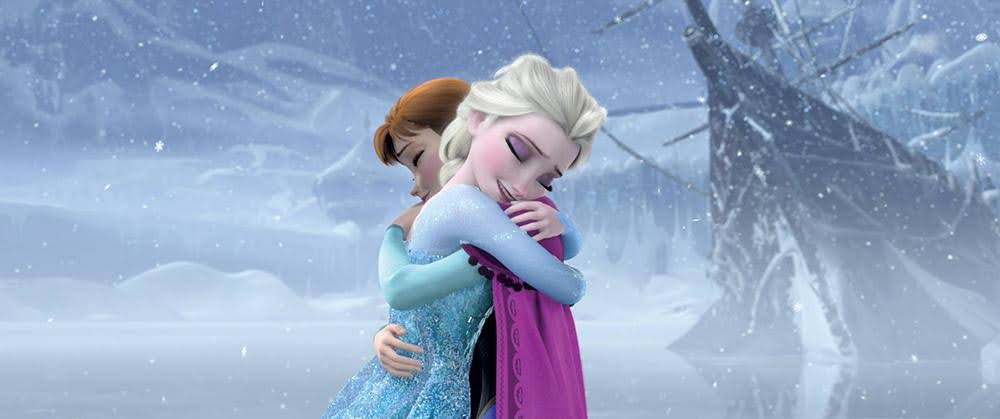
The exceptions to these rules include La La Land and The Greatest Showman (a biographical movie).

If, however, the answer is ‘yes’ and your story simply must be a musical, then by all means, go for it!
Don’t miss a beat.
Celtx’s script writing software helps you compose the perfect story.
Start your free trial today
Formatting | The Technical Stuff
For starters, it completely depends on where you see your musical – is it a movie or theater production? This initial decision will determine how you’d format it.
If you foresee your musical on stage, as is traditional, you’d be wise to write in a playscript format. You’d then write your book or libretto as a playscript, noting where your songs would appear. Then you’d write your music and lyrics separately.
On the other hand, if you want your musical to be produced as a film (like La La Land), you’d write the book or libretto as a screenplay. Again, the music and lyrics would be separate.
You can, of course, integrate your lyrics into the script if you’d prefer to combine your book/libretto with the music into one document. This is most common in musical screenplays, but you can do this for a musical play script too. You can differentiate sung lyrics from regular dialogue with underlining or italics.
Here, in the movie script for Les Misérables, you’ll notice the lyrics are blended with dialogue. This is because each song is a crucial piece of the narrative, continuing the story from the dialogue.

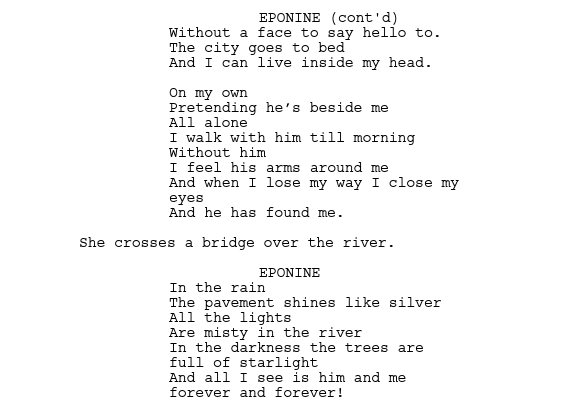
Notice how the action and song are blended to show how the story flows through action, dialogue and music. This is consistent throughout the whole script.
For more on songwriting, check out these wonderful resources from the National Alliance for Musical Theatre.
Conversely, in the stage script for Matilda the Musical, the lyrics clearly stand out in capitals. While this version of the script is a published book version, you can still see how the dialogue (normal case), action (italics) and lyrics (capitals) are differentiated.
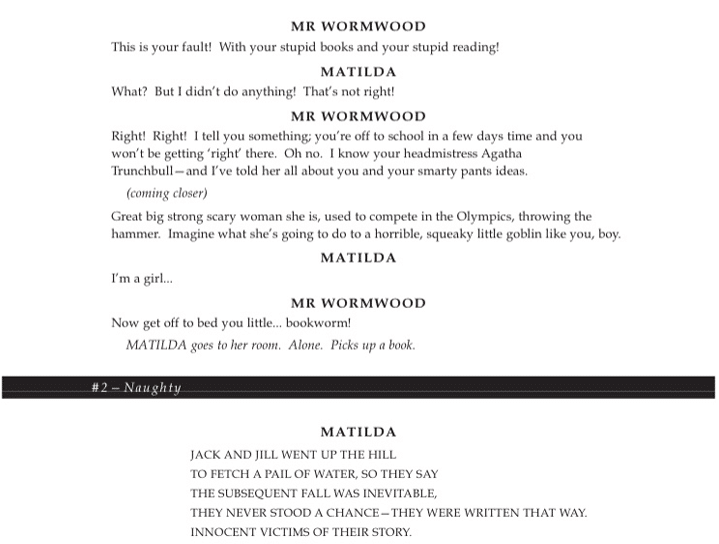
For more detail on how to format a musical for the stage, this industry guide from The Dramatists Guild is an awesome overview.
As we know, there are formatting standards for both screenplays and play scripts that I highly recommend you follow if you want to go down either of these routes. Essentially, your vision needs to be clearly set out so all the different stakeholders can understand. Sticking to a format that everyone will understand is your best bet.
Our templates for play and movie scripts on Celtx are perfect to get you started. With automated formatting, we allow you to focus on what’s important – creating and writing!
Writing Lyrics & Dialogue That Flow
As we’ve already mentioned, the story and music must work together to create a compelling and cohesive narrative. But how does this work and what do you need to consider?
1. Character Voices
Ensure both spoken and sung words reflect a character’s personality, background and emotional state. Consistency in voice not only enhances a character’s believability but also helps them be more relatable to an audience.
2. Advancing the Plot
Okay, I know we keep going on about this, but plot is king. Both the dialogue and music should serve the story, reveal information or drive the narrative forward. Especially when it comes to the songs, avoid filler content that doesn’t contribute to these objectives.
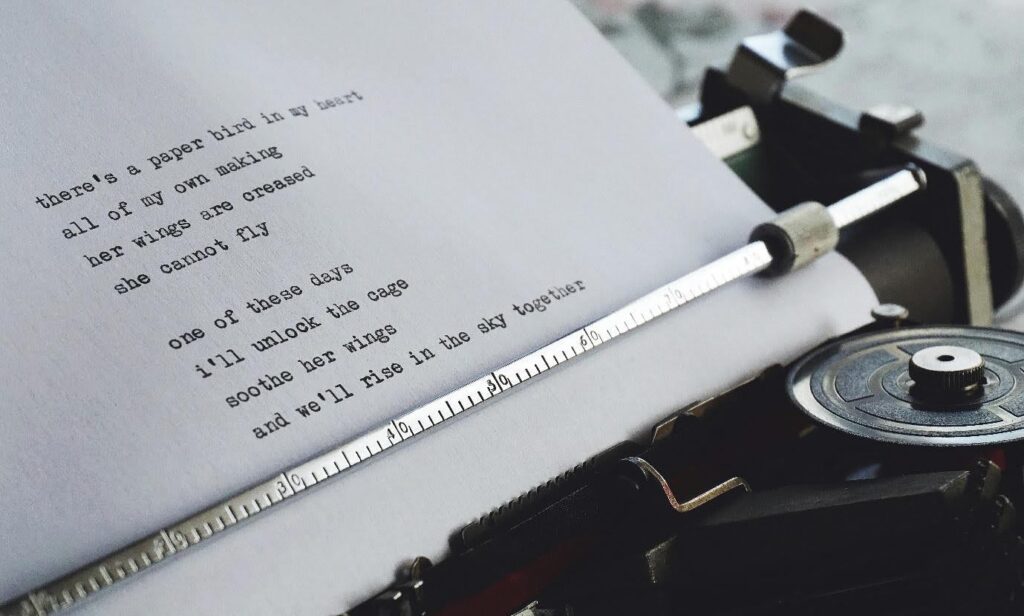
3. Rhythm and Pacing
The rules for dialogue rhythm and pacing are the same as if you were writing a movie or stage play; it should feel natural.
When it comes to lyrics, these should align with musical phrasing, again feeling natural and matching the atmosphere of the scene the song is within.
4. Transitions
The transitions between dialogue and songs should be smooth and not jarring; you don’t want to pull your audience out of the story with a clunky transition.
Consider how a line of dialogue could lead into a song or how a musical phrase could resolve into spoken word.
Blocking & Stage Directions in a Stage Musical
With choreography an added element for a stage production, it’s something you need to think about writing. If you do decide to write your musical for the stage, you’ll need to include effective stage directions and blocking notes.
These directions need to be specific without overloading the script with unnecessary detail. Like a movie script, you want to indicate only what’s visually necessary: movements, gestures, and positions that are crucial to understanding the scene while reinforcing themes, emotions or character dynamics.

Finally, be mindful of the space you have available and its limitations as you’re writing your stage directions. Unlike movies, you won’t have the luxury of different locations and spaces!
Set the stage for success—Celtx’s stageplay editor is built for musicals, making it easy to format dialogue, lyrics, and stage directions seamlessly.
Try Celtx screenwriting software today!
Examples from Broadway & Film Musicals
Let’s see some of this theory in action and break down some key scenes from two of the world’s most famous musicals.
First, we’ll return to Les Misérables, but the original stage version.
Case Study #1 | Les Misérables
The Act 1 finale song, One Day More, unites the major characters who each express their anticipation for the impending revolution that all kicks off in Act 2.
In the sample from the libretto vocal book below, you’ll see how the song moves between the characters and distinguishes overlapping lyrics and dialogue, coalescing into a powerful ensemble ending.
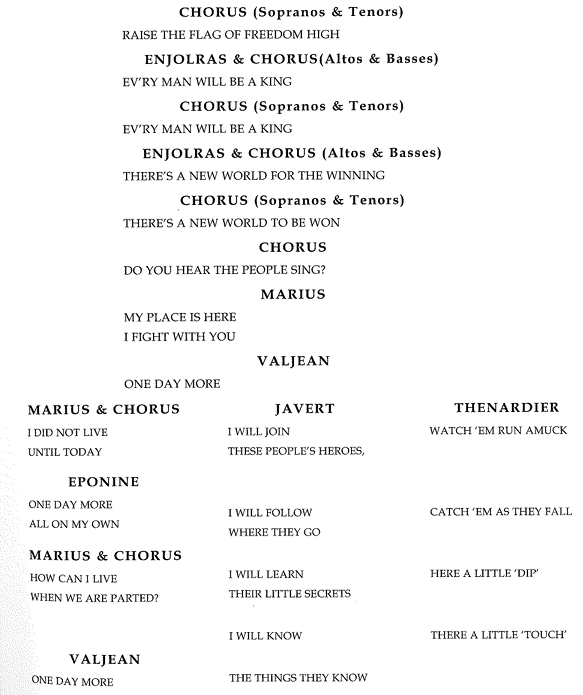

You’ll notice that careful consideration and planning has been put into the song’s musicality and tone, with specific voice types noted next to the lyrics.
As the characters sing as one at the end of the song, the formatting changes slightly, showing the sheer spectacle of the vocals. Don’t forget, movement and choreography will also be considered here.
Case Study #2 | The Sound of Music
One of the most recognizable songs from a musical is Do-Re-Mi by Rodgers and Hammerstein, sung by Julia Andrews in the 1965 movie classic.
The purpose of the song within the narrative is for Maria to teach the von Trapp children how to sing for the very first time.
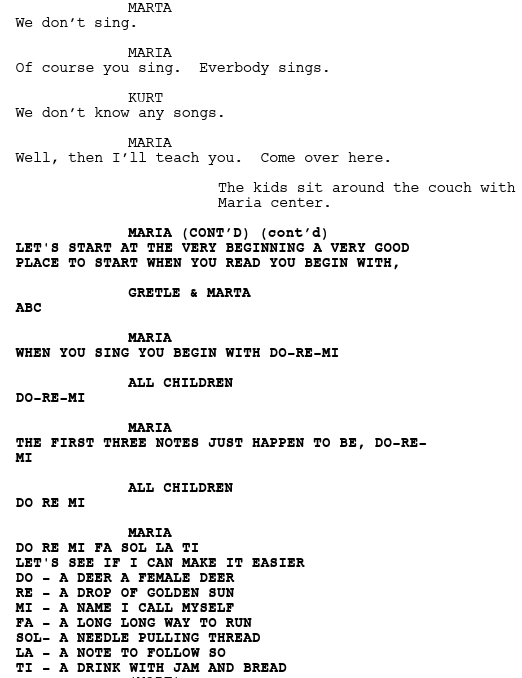
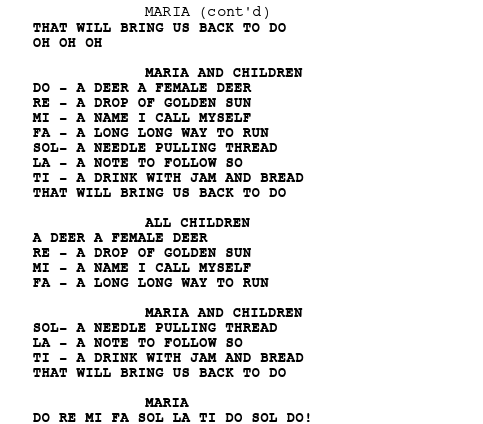
While this is written in a traditional stage format, it’s still useful to us. Notice how the lyrics are all capitalized to differentiate them from the dialogue. The song is also broken down into sections depending on who sings which lyrics.
As the song progresses, Maria leads the children through different outdoor locations, visually reinforcing their growing confidence and joy in learning.
For more examples of musical scripts, Lazy Bee Scripts has a comprehensive library that you can peruse and analyze to your heart’s content.
Tips for First-Time Musical Writers
We’re not quite finished with our time on musicals. Here are some of our top tips to get you started with your next musical script.
- Listen to a variety of musicals for inspiration.
- Start with a strong premise.
- Focus on character-driven storytelling.
- Ensure each song serves a narrative purpose.
- Collaborate with composers and lyricists where you need to.
- Keep stage limitations in mind.
- Revise and workshop your script to garner feedback and make revisions.
- Use Celtx templates for proper formatting!
Conclusion
Writing a musical script is both an art and a craft. By mastering industry standards, structuring your script effectively, and ensuring seamless integration of dialogue, lyrics, and stage directions, you set the foundation for a compelling production.
Whether you’re writing your first musical or refining a work-in-progress, tools like Celtx can help streamline the process.
Now that you have a strong understanding of musical script formatting, there’s only one thing left to do – start writing! Download Celtx’s free templates to format your script like a pro and bring your creative vision to the stage or screen.
Your script deserves a standing ovation—Celtx script writing software keeps your writing in harmony.
Get started today!
Up Next:
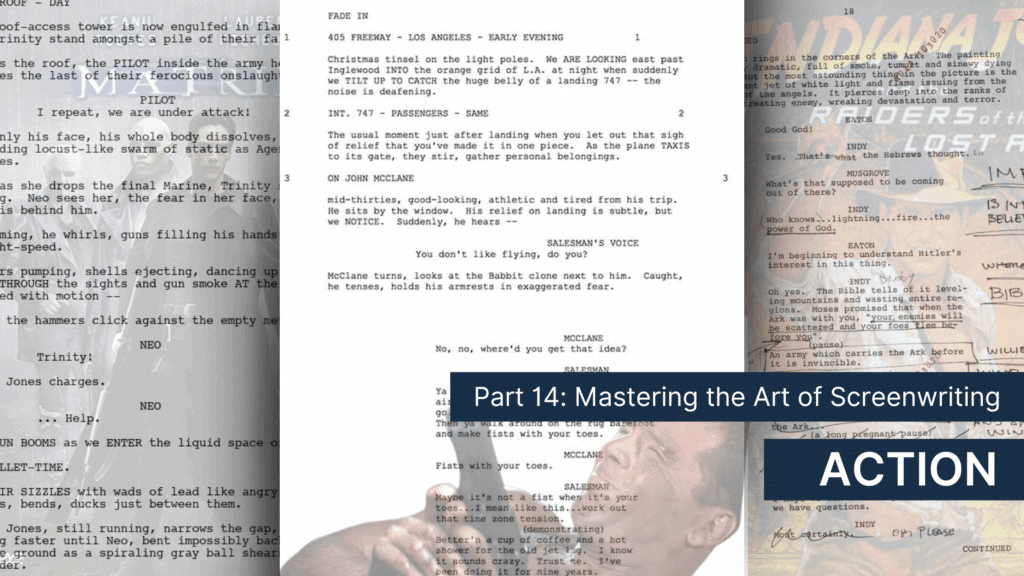
From Zero to Hero: How to Write an Action Movie Script
Learn how to write an action movie screenplay—from high-stakes plots to cinematic pacing—with tips, examples, and tools to script it all in Celtx.
Learn how to write every genre, every script type, with the Celtx Screenwriting Series:
- Part 1: Introduction to Mastering the Art of Screenwriting
- Part 2: From Dreams to Screams: How to Write a Horror Script
- Part 3: From Dreams to Screams: How to Write a Horror Script Part 2
- Part 4: Beyond the Stars: How to Write a Science Fiction Script
- Part 5: Laugh Out Loud: How to Write a Comedy Script
- Part 6: From Tears to Triumphs: How to Write a Drama Script
- Part 7: From Meet-Cutes to Happy Endings: How to Write a Rom-Com Script
- Part 8: Crafting Magic: How to Write a Holiday Movie Script
- Part 9: How to Write a Documentary Script: A Step-by-Step Guide
- Part 10: How to Write a Skit That Lands Every Time
- Part 11: How to Write a Romance Script that Sweeps Audiences Away
- Part 12: From Clues to Conclusions: How to Write a Mystery Script
